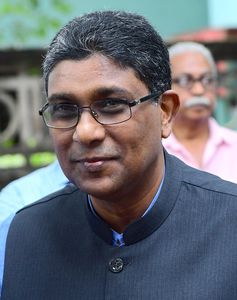As a person born into a family of lawyers and judges, before taking that route myself, my undying faith in the Indian judicial system is, in a sense, unshakeable. It is a faith that was instilled in me through my years of working the legal system, first as a lawyer for slightly over two decades, and then as a judge in the decade that followed.
Over the years, I have come to realise that our governing document, the Constitution of India, holds immense potential to find solutions to the myriad sociopolitical conflicts that arise frequently in our pluralistic society. Indeed, if the document is worked by judges committed to the cause of justice—social, economic and political—our country can truly aspire to be that “heaven of freedom” envisioned by our great poet Rabindranath Tagore. To achieve that goal, however, we need to introspect on some vital issues.
In the years since our Independence, the judiciary in India has been fortunate to have had some of the best legal minds appointed as judges at different levels in the judicial hierarchy who, with their commitment to the cause of justice, have been able to guard the citizenry of this country against legislative and executive excesses, while zealously guarding the fundamental and other legal rights of individuals in society.
While there have been instances of justice having suffered on account of the inaction of ‘timorous souls’, our judges have, for most part of history, demonstrated themselves to be ‘bold spirits’ when it comes to nullifying unconstitutional state action. And, it is this trend that will continue to guide us in the future. However, we have to adhere to a procedure for recruitment and promotion of judges that is not only primarily merit-based, but one that pays due deference to social requirements such as class representation, so that there is an eclectic mix of erudite judges at all levels in the judicial hierarchy. Their numbers must also increase, for it is only then that we can reduce the delays that plague our system and tackle the huge backlog of cases. A fact that is often overlooked by our policy makers is that the judge-population ratio in India is around 21 judges per million. In Europe and the US, it is 210 and 150, respectively. Despite the Law Commission of India recommending a ratio of at least 50 judges per million, no such steps have been taken.
Granville Austin described the Indian Constitution as being a social document. We have accordingly recognised and treated it as an organic document, the interpretation of which is susceptible to change in line with societal changes. Axiomatically, our judges are trained to keep in sync with the changing notions of social, economic and political justice in contemporary society, while working the constitution to resolve conflicts. In recent times, however, we have had to consider a break with tradition while discharging our judicial functions.
Judicial tradition insists on a judge remaining aloof and far removed from the realities of social life, so that he/she may render justice, ‘without fear or favour, affection or ill will’. A continued adherence to such traditions may not augur well for a future that requires a judge to be aware and constantly updated of social attitudes and choices made by individuals, such as with regard to their physical autonomy or intimate relationships. There is a growing need to bridge the ‘knowledge gap’ faced by our judiciary. We can perhaps achieve this by employing innovative, interdisciplinary methods of continuing judicial education at the national and state judicial academies.
Another aspect of concern is that of judicial independence. Although under the Constitution, a strict separation of powers between the legislature, executive and judiciary is not envisaged, we do have a functional separation that is controlled by a system of checks and balances. The check on the judicial branch is often achieved through a forced dependence on the executive for the implementation of its orders, and inadequate funding. Freedom from executive dependency in the matter of implementation of judicial orders can perhaps be achieved, to a limited extent, by enlisting a legally trained police force that would function under the direct control of the judicial wing. The general allocation for the judiciary in most annual budgets, at the national and state level, is less than two per cent. To build a ‘futuristic’ judiciary that will have the necessary infrastructure, the state executive must loosen its purse strings.
I believe that if we take these urgent measures, we can transform our judiciary into a futuristic one by 2029.
The writer is a judge at the Kerala High Court.
* Improve judge-population ratio
* Freedom from executive dependency
* A legally trained police force under the control of judiciary
* Increase allocation for judiciary in budget
* Employ innovative methods of education in judicial academies




